|
My anthology Glass and Gardens: Solarpunk Summers is open for submissions today through November 15, 2017. I'm looking for short stories (up to 8000 words) about summertime in a solarpunk world. What's solarpunk? See my blog about it here. What does it mean to "edit an anthology"? See my blog about that here. Writing solarpunk, but your story doesn't match my theme? See other solarpunk markets here. I've wanted to do this anthology for a long time, and I'm excited to see what comes in to the slush pile. I'm hoping to see a lot of stories about optimistic futures with cool tech and colorful settings. I'm calling this anthology "Glass and Gardens" because those two images evoke the solarpunk aesthetic: glass for solar panels and skyscrapers, gardens for farms and urban greenery. This is a paying market for writers, but how much World Weaver Press will be able to pay depends on reaching some stretch goals in a Kickstarter that's currently running. The Kickstarter supports the translation of a different Solarpunk anthology from Portuguese to English, and the stretch goals support author payments for Glass and Gardens. Click here to see more about the Kickstarter. Glass and Gardens: Solarpunk Summers Submission Guidelines GLASS & GARDENS: SOLARPUNK SUMMERS
Anthologist: Sarena Ulibarri Open for Submissions: August 15, 2017 - November 15, 2017 Expected Publication: Summer 2018 Story Length: up to 8,000 words Payment: TBD (Determined by Kickstarter success.) Solarpunk is a type of eco-conscious science fiction that imagines an optimistic future founded on renewable energies. It might take place in a wind-powered skyscraper or on a solar-powered robotic farm. Often coupled with an art nouveau aesthetic, and always inclusive and diverse, solarpunk stories show the ways we have adapted to climate change, or the ways we have overcome it. For this anthology, I want to see solarpunk summers. Show me futuristic stories that take place in summer, whether that involves a summer night in a rooftop garden, or characters adapting to extreme heat and weather, or an annual migration to cooler lands. Keep it planet-based (Earth or other), and optimistic. Solarpunk worlds aren’t necessarily utopias, but they definitely aren’t dystopias. We're a northern hemisphere publisher, but southern hemisphere summers are also welcome! Need inspiration? Read New York 2140 or Pacific Edge by Kim Stanley Robinson, Sunvault: Stories of Solarpunk and Eco-Speculation, or Wings of Renewal: A Solarpunk Dragon Anthology. Submission Method: Send your story as a .doc, .docx, or .rtf attachment to solarpunk[at]worldweaverpress[dot]com with Submission: [story title] in the subject line. Please include a brief cover letter, but DO NOT summarize your story in the cover letter. Simultaneous submissions = okay. Multiple submissions = no. About the Anthologist: Sarena Ulibarri attended the Clarion Fantasy and Science Fiction Writers' Workshop in 2014 and earned an MFA from the University of Colorado, Boulder. Her fiction has appeared in magazines such as Lightspeed and Fantastic Stories of the Imagination, as well as anthologies such as Biketopia: Feminist Bicycle Science Fiction Stories in Extreme Futures and Dear Robot: An Anthology of Epistolary Science Fiction. She has been Editor-in-Chief of World Weaver Press since 2016, and edited the anthology Speculative Story Bites.
0 Comments
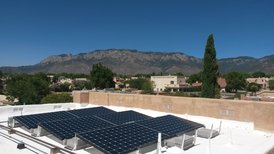 Since solarpunk stories are (usually) science fiction, you can send your solarpunk story to any of the big science fiction magazines: Clarkesworld, Lightspeed, F&SF, Strange Horizons, etc. If the story’s good enough, and it fits what they’re seeking for their next issue, they might publish it. I’d love to read more solarpunk stories in the professional SFF magazines! But what are the magazines and anthologies that are actively looking for solarpunk right now? Below are ten paying markets, either themed issues, themed anthologies, or solarpunk-friendly magazines that might be interested in publishing your solarpunk story. Just starting to submit your fiction to magazines and anthologies? Check out my Six Step Sequence for Submitting Short Stories for tips about how to make a good impression on editors. Not sure what solarpunk is? Check out the reference guide. Know about solarpunk magazines, anthologies, or contests I left out? Leave the info in the comments! 1. Afrofuturism Anthology, Published by Afrocentric Books Submission Window: closes September 30, 2017 Length: 1,000 to 7,500 words Payment: $0.01 per word Description: Futurism is a broad umbrella, encompassing many elements of science fiction and fantasy. For this anthology, we are most interested in science fiction. Time travel, space travel, cultures far advanced from our own. This world, other worlds, space stations, the setting doesn’t matter. We want adult science fiction stories in diverse settings, featuring diverse people. The “in the future all people are a uniform color of café au lait” trope does not interest us. While it is not necessary for you to describe the physical features of all your characters, we do want to know that one of your main characters is of indigenous African descent. Note: This is specifically a call for Afrofuturism, so a solarpunk story featuring characters of indigenous African descent could fit their needs. Full Guidelines: http://www.mugwumppress.com/afrocentric/afrofuturism/ 2. Fire: Demons, Dragons and Djinns Anthology, Edited by Rhonda Parrish, Published by Tyche Books Submission Window: closes August 15, 2017 Length: up to 7500 words Payment: $50 Canadian (non-Canadian authors welcome) Description: Fire: Demons, Dragons and Djinns will be filled with stories about every kind of fiery creature you can imagine, not only those listed in the subtitle. We’re looking for phoenixes, ifrits, salamanders, lava monsters and fiery beasts no one has ever heard of before. And of course this anthology will not be complete without at least one demon, dragon and djinn! Note: In the editor’s Manuscript Wish List for this anthology, she specifically mentions wanting “a fiery solarpunk story.” Full Guidelines: http://www.rhondaparrish.com/call-for-submissions-fire/ 3. FutureScapes: Blue Sky Cities Contest, Anthology Submission Window: closes October 13, 2017 Length: up to 8,000 words Payment: $2000 first prize, $500 for 5 runners up, + publication in anthology Description: We’re seeking stories set in a near-future city where significant strides have been made toward improving air quality, climate adaptation, or even net positive impacts on climate and air quality. We want to see your vivid ideas and concepts, but don’t forget the basics of story: strong voice, compelling characters driven by real desires, facing serious obstacles that sum to an engaging plot and story. You need not paint us a utopia – we don’t really believe in those. We believe that at any given time, depending on individual perspective, every city has dystopian and utopian aspects. The key is to show us a solution, but don’t strip it of realistic political, scientific, or logistical obstacles, and don’t neglect the possibility and ramifications of unintended consequences from even the best solution. Note: The first entry to this contest is free, but it costs $24 to submit a second story. Full Guidelines: http://www.futurescapescontest.com/ 4. The Future Fire Magazine, Edited by Djibril al-Ayad Submission Window: ongoing Length: up to 10,000 words Payment: $20 per story Description: The Future Fire publishes beautiful and useful fiction and poetry that focuses on the social-political elements of imaginary, futuristic, fantastic, horrifying, surreal or otherwise speculative universes. We are particularly interested in feminist, queer, postcolonial and ecological themes, writing by under-represented voices, and stories from outside the Anglophone world. Note: The Future Fire has also been collecting a list of recommendations for optimistic science fiction books. Full Guidelines: http://www.futurefire.net/ 5. Glass & Gardens: Solarpunk Summers Anthology, Edited by Sarena Ulibarri, Published by World Weaver Press Submission Window: August 15 to November 15, 2017 Length: up to 8000 words Payment: Ranging from token ($10) to semi-pro (see guidelines for details) Description: Solarpunk is a type of eco-conscious science fiction that imagines an optimistic future founded on renewable energies. It might take place in a wind-powered skyscraper or on a solar-powered robotic farm, in a bustling green-roofed metropolis or in a small but tech-saavy desert village. Often coupled with an art nouveau aesthetic, and always inclusive and diverse, solarpunk stories show the ways we have adapted to climate change, or the ways we have overcome it. For this anthology, I want to see solarpunk summers. Show me futuristic stories that take place in summer, whether that involves a summer night in a rooftop garden, or characters adapting to extreme heat and weather, or maybe an annual migration to cooler lands. Keep it planet-based (Earth or other), and optimistic. Solarpunk worlds aren’t necessarily utopias, but they definitely aren’t dystopias. We're a northern hemisphere publisher, but southern hemisphere summers are also welcome! Note: Full disclosure, I’m the primary editor for this project. Full Guidelines: http://www.worldweaverpress.com/submit-anthologies.html 6. Hyperion and Theia Anthology, Edited by E. O. Smith, Published by Radiant Crown Publishing Submission Window: December 1, 2017 to January 31, 2018 Length: 1001 to 40,000 words Payment: $0.01 per word Description: Year Two Theme: Rebus Language offers up a whole new world if one can decipher the many meanings hidden within a word. Year Two of Hyperion and Theia wants stories and poetry that runs the gamut of genres and offers to the reader a rebus of sorts, filled with cryptic messages. Submit a sci-fi caper featuring humanity thwarting an alien invader with the use of signs and symbols. Dazzle us with a comedic horror in which communication with the dead takes on a whole new meaning. Note: In their “Of Interest” section, they list: “Dieselpunk, Solarpunk, Weird Westerns, Cyberpunk, Magic Realism, Gothic Horror, Retrofuturism, Afrofuturism, Wuxia, Romantic Suspense, Historical, Capers, Gothic Romance, Neo-/Noir, and lesser known sub-genres” Full Guidelines: http://hyperionandtheia.com/index.php/submissions/ 7. Rebellion and Refuge Anthology, Edited by Laura Harvey, Published by Pen and Kink Publishing Submission Window: October 1 to November 30, 2017 Length: 1000 to 15000 words Payment: $10 + copy of the anthology Description: This anthology will explore resistance and rebellion within a romantic context—because sometimes love has to take a stand—but it will also include stories of refuge because you can’t fight all the time, and sometimes love is the only thing that brings you peace (or at least a place to breathe). We want stories of feisty park rangers fighting the good fight, couples falling in love at protest marches (bonus points if they start out on opposite sides of the issue) and people forced to choose between what is right and what is easy. We want stories where a character’s only emotional refuge is within the arms of their lover and ones where couples work together to do the things they believe will make the world a better place. We’re open to stories at every heat and kink level, and any sort of pairing (or more-ing) that you can imagine. Stories must have a real conflict and tension with a HEA or HFN ending. Note: This is a romance anthology, and most stories included will likely be contemporary or historical, but a near-future solarpunk romance still has a good shot at fitting what they’re looking for. Full Guidelines: http://www.penandkinkpub.com/home/rebellion-and-refuge/ 8. Reckoning Magazine, Edited by Michael J. DeLuca Submission Window: ongoing Length: up to 45,000 words Payment: $0.06 per word Description: The short version: fiction preferably at least a tiny bit speculative, nonfiction preferably more creative than journalistic, poetry tending towards the narrative and preferably with some thematic heft, art your guess is as good as mine. But the heart of what I want is your searingly personal, visceral, idiosyncratic understanding of the world and the people in it as it has been, as it is, as it will be, as it could be, as a consequence of humanity’s relationship with the earth. Note: Focused on stories of “environmental justice.” Darker tales or “pre-solarpunk” may do better here than stories that skip over how a solarpunk society was created. Full Guidelines: http://reckoning.press/submit/ 9. Retro Future Magazine, Edited by John Carimando Submission Window: closes September 1, 2017 Length: 250-500 words is especially welcome; longer works may be serialized. Payment: “We will always meet or exceed SFWA minimum compensation guidelines.” ($0.06 per word) Description: Issue Submission Themes—Issue #4: Resistance to oppression. We welcome submissions of art and writing that approaches retrofuturism through a progressive lens. We are looking for forward-looking and optimistic science and science-fiction. Sensitive topics can be part of a good story, but a vision of a future better than our present is the focus of Retro Future. Note: Retro Future is looking for both stories and comics. Future submission themes will vary, but their request for optimistic science fiction carries over between issues. Full Guidelines: http://www.galileogames.com/retro-future/ 10. Seat 14C Contest, Anthology
Submission Window: closes August 25, 2017 Length: 2000 to 4000 words Payment: $1500 + trip to Japan, + publication on website Description: Your short story is a first-person account of the passenger seated in 14C aboard ANA Flight #008. What does this person experience as they arrive in 2037 and explore a changed world? How has emerging (or not-yet-invented) technology altered society for the better, and how does your character discover and interact with this technology? We are hopeful for our future, and we ask that your story creatively weaves technology and culture, envisioning an optimistic and exciting future for mankind. Note: This contest is prompt-based, and writers should read some of the other “seats” to see what they’re looking for and what’s already been done. No fee to enter. Full Guidelines: https://seat14c.com/future_ideas/new 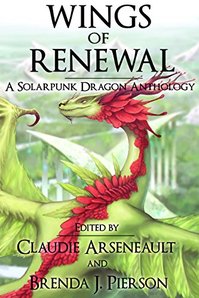
This week, I'm wrapping up my reviews for the stories in the anthology Wings of Renewal: A Solarpunk Dragon Anthology.
Did you see parts 1 and 2 of my Wings of Renewal solarpunk book review? You can click here and here to see my reviews of the first 15 stories. I definitely have favorites, and I definitely have criticisms, but overall, this book has been an enjoyable read. With so few options out there for books and stories that identify as solarpunk, this is a good place to start, and to gather ideas for your own solarpunk stories. Morelle and Vina by Sam Martin
A couple of kids find an old airplane in the off-limit ruins, and, through some salvage work and genetic engineering, build it into a living dragon. The imagery of this story is absolutely gorgeous: elevated bike paths made from sea shells and shaded by solar panels, a central vertical garden draped in greenery; streets designed with colorful mosaic tile. This is also the best example in the book of a co-operative, post-capitalist society. It seems like a lovely world to live in, but it doesn't feel like a static utopia—things are not perfect, and there are consequences for pushing boundaries the way our main characters do. Unfortunately, we never actually get to see those consequences, because the story ends so abruptly. It lacks resolution, ending right at the climax, and on quite a negative note. One of the key things people are looking for in solarpunk is optimism. Does that mean solarpunk stories have to have happy endings? If not happy, I think, then at least hopeful. This story, though it had many beautiful moments and ideas, ultimately left me on a sour and unsatisfied note.
Wings of the Guiding Suns by M. Pax
One of the few stories in this book told from the point of view of a dragon, this a galactic guardian sent to rescue the last remaining humans from Earth before the sun is destroyed—if only the humans will agree to be rescued. Overall, the writing is strong and the imagery is great. The premise is intriguing, though I think vastly oversimplified. Still, it's a nice tale of the complexity of human nature and perseverance against great odds.
Seven Years Among Dragons by Lyssa Chiavari
Mixing fantasy and science fiction can work, but the rules and limitations of the world need to be established and consistent. (Have you noticed my primary criticism of stories in this anthology is usually worldbuilding?) This one does not feel consistent at all. The sci-fi and solarpunk aspects seem tacked on to what would otherwise be a coherent fantasy story, and could be extracted and replaced with lower-level fantasy tech or magic—both of which already exist in this world, though there's little explanation for why one is used rather than another for any given reference. Still, there are a lot of things to like about this story. It's a unique twisting of Snow White. The writing is vivid and engaging, and the author has an excellent knack for tension and pacing. I would have liked this one a lot better just as a fantasy story. The solarpunk themes feel forced, and the technology is unexplored.
One Last Sweet by Claudie Arseneault
A sweet story (no pun intended) about a boy who wants to do something nice for a dying dragon that helped his village become self-sufficient. There's not a lot at stake, and there's a lot of "telling" exposition, but overall it's a nice story with interesting tech, likeable characters, and good disability representation. The final scene is vividly rendered and memorable.
Community Outreach with Reluctant Neighbors by Kat Lerner
If we accept solarpunk as an aesthetic or a mode rather than a genre (as I suggested in my Part 2 review), then this is a solid example of solarpunk fantasy. On the tech and setting level, it's light, but it's there. Two important scenes directly involve solar panels, and there are several mentions of algae lamps. But in terms of solarpunk themes—environmental balance, community and cooperation, accepting others, hope and optimism, etc.—it has those in droves. This is one of the better written stories in this anthology. A Leslie Knope-type community organizer makes it her personal mission to get the anti-social witch on the hill involved with community activities. It's a lovely story of mutual redemption, and really, the anthology is worth buying just for this story alone.
Wanderer's Dream by Maura Lydon
To be honest, I didn't entirely understand the plot of this story, but it has something to do with a couple of "Wanderers" (which seems akin to the aboriginal "walkabout") who help a dragon and a dragon-lady. The stakes are high—humans and dragons are not allowed any contact, on penalty of death—but seem arbitrary. The background and logic of this law are never explained or explored. Though, maybe that's part of the point. Maybe, like much paranormal romance, it's a metaphor for "forbidden" types of love (i.e. queer relationships or kink). I'm not sure. But while the plot didn't hold together for me, the characters and interpersonal relationships were well drawn and kept me engaged. This is another fantasy story with a solarpunk overlay, and while nothing is lost from that overlay, I don't think much is gained from it either.
The Last Guardians by J. Lee Ellorris
This is a wonderful story, and a perfect end to this anthology. I may have teared up a little bit... In a world where dragons have come to Earth to be caretakers and guide humans back to the right path, the last two guardian dragons have reached the end of their lives. But as her partner prepares for death, the last one seeks a miracle that will ensure they are not actually the last. As solarpunk continues to develop, I'd love to see it focus on how humans can save ourselves, without aliens or magic or divine intervention, but even though dragons save us in this story, the themes of environmental stewardship and cooperative responsibility are crystal clear. And if we must be saved, then I can think of no better saviors than gorgeous, kind, queer dragons. This is a world I would definitely love to live in.
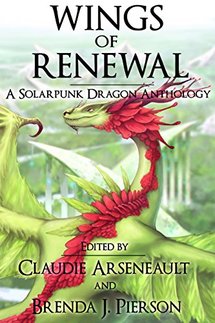
This week, I'm delving into the middle stories in the book Wings of Renewal: A Solarpunk Dragon Anthology, edited by Claudie Arseneault and Brenda J. Pierson.
Did you see the first part of my Wings of Renewal Book Review? If not, click here for reviews of the first eight stories. Not sure what "solarpunk" means? Check out my blog post on the World Weaver Press site called "The Brighter Futures of Solarpunk," as well as the comprehensive "Solarpunk Reference Guide." And that is all the ado I shall give this week. On to the reviews: The Quantum Dragon by Tobias Wade
A water energy scientist learns a corporation is allowing fusion reactors to collapse and profiting from people who are fleeing Earth for a Martian colony, so he creates a virus to shut down the reactors—which makes things worse. I enjoyed the science in this story, but wish the author had delved a little deeper into it. The protagonist is working on a method to harness energy from ocean currents. Cool! But why is this the green tech that's going to save us, more than, say, wave energy (which already exists), or any of the other renewables? I'd have loved to know more.
Note: It has come to my attention that this story is not included in the re-issued edition of Wings of Renewal. I am reading a first edition, published by Incandescent Phoenix Books. The new edition republished by Claudie Arseneault contains fewer stories than the original. Fighting Fire With Fire by Gemini Pond
A community works together to extinguish a fire that threatens the forest their forebears planted to stop the encroaching desert. Like a lot of the stories in this anthology, it could have used a bit more in the way of worldbuilding and characterization, but overall, this was a nice story about cooperation and perseverance.
Refuge by Mindi Briar
A stranded spaceship pilot is rescued by an ethereal dragon and taken to a utopian planet. This story would be right at home in a space opera or space adventure anthology, though it is a bit rare to see true utopias (that don't turn out to be dystopias in disguise). This story faces head-on a lot of the concerns writers have about utopian settings, and through exploration and contrast, comes to a satisfying conclusion. The author claims to be writing a novel in this world. I'll keep an eye out for it.
The Dragon of Kou by Caroline Bigaiski
The idea that dragons and other creatures of myth returned once we cleaned up the planet is a pretty common theme in this anthology. To be honest, that was the angle I took in the story I wrote for their call for submissions (which was rejected, as it should have been. It wasn't ready!). This story had some nice moments, but the narrative style was quite distancing for me, and I don't feel it will stick with me as one of the more memorable pieces. And to be honest, by this point in the anthology, I'm craving a little more "solarpunk" and a little less "dragon."
Deep Within the Corners of My Mind by CJ Lehi
I enjoyed the Romanian setting of this story—it's not one I see very often in science fiction. I can't speak for authenticity or representation, but nothing stood out to me as an obvious stereotype, and the setting did feel integral to the story. A bit more violent than the others so far in this anthology (though vastly less so than an average SFF tale these days), with a satisfying non-violent resolution.
Note: It has come to my attention that this story is not included in the re-issued edition of Wings of Renewal. I am reading a first edition, published by Incandescent Phoenix Books. The new edition republished by Claudie Arseneault contains fewer stories than the original. The Witch's Son by Diane Dubas
I ranted last time about how I thought solarpunk should remain science fiction and not get too tangled up with fantasy and magic, but this story is making me question that assertion. This is urban fantasy in a solarpunk setting, and, I don't know, it kind of works. Is solarpunk a genre, or is it an aesthetic, the way horror can be considered an aesthetic? Can solarpunk be overlaid onto other genres without losing its core? Maybe it can. Magic exists in Dubas's world, but it wasn't magic that reversed our ecological damage. The backstory about climate change and renewal is too brief, glossing over how we got to this world, but that's also not the focus of the story. Really, it's a symptom of the fact that this should be a novel. It feels like a first chapter rather than a fully-realized short story, and if it were given the room to breathe, I'm sure we'd get all that backstory much better fleshed out. One of the most awesome parts of this story was The Red Door. This is such an great idea, and so much more could be done with it.
"The Red Door was synonymous with all things forbidden: sex, drugs, magic, and petroleum. Are you a duke with a penchant for diesel engines? The Red Door is your place. A countess with a kink for motor oil? The witch behind the Red Door is there for you." Dragon's Oath by Danny Mitchell
In a world where people harvest dragon scales to use like solar panels, someone is hunting and shooting down the dragons. Like the previous story, this is much more of a first chapter than it is a complete short story. It raises a bunch of story questions but resolves none of them. Our protagonist finds one of the injured dragons and becomes a caretaker for its baby. That's great, but it's the start of a story, not a whole story. The characterization and worldbuilding on a micro scale is pretty good—I always had a good sense of the immediate setting, and the diversity of the characters is one of the best parts. We have a hijab-wearing Muslim protagonist, and Mandarin-speaking background characters, which is an intriguing mix. However, I was kind of lost on the macro scale: Are we in a future earth where dragons have reappeared (like many of the other stories in this book)? Are we in an alternate present-day earth where dragons have always existed? Are we on a new planet like Pierson's "New Persia"? Are we in a secondary fantasy world inspired by Islamic culture? I really couldn't tell.
The solarpunk tech in this story was mostly background, but there was a satisfying amount of it: "solar trees," which, without additional description, I'll choose to imagine like those awesome Singaporean solar collectors; molten-salt batteries for solar storage; ornithopter drones; electric bikes; etc. The idea of literal dragon scales as solar converters is dampened a bit for me by the fact that "Dragon SCALEs" is an actual type of flexible solar technology, but that probably didn't even exist when this story was written. Overall, my biggest critique of this story is that it really needs to be a full novel, and if it were, I'd definitely keep reading when I got to the end of the first chapter.
Come back next week for Part 3 of my Wings of Renewal solarpunk book review!
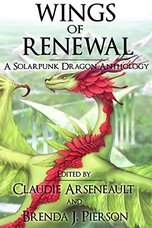
The first time I ever heard the term solarpunk was in the call for submissions for the Wings of Renewal "solarpunk dragons" anthology. I've already blogged about how solarpunk gave a name to something I was already deeply craving in my science fiction, and the darker the world gets, the brighter I want my fiction to be—both what I write and what I read. I tried my hand at a solarpunk dragon story for this anthology, but the Wings of Renewal editors politely (and rightfully) declined it. I bought the anthology when it was first released, but it's taken me a while to actually read it, for various (not very good) reasons.
As I read, I found that I had MANY OPINIONS, both about the stories themselves and about how solarpunk is and is not developing as a genre and a movement. And what is a blog except a perfect place to bark my opinions into the wind? It's a long book (22 stories and 500+ pages), so I'll be spreading my reviews out over three blog posts—one per week is the plan. These are solely my opinions, and I have nothing at stake here except a general interest in helping make solarpunk a thing. (You can see what I'm doing on that front here and here.) I'd also like to note that editor Claudie Arseneault is donating proceeds from sales of Wings of Renewal to NoDAPL, so that's as good a reason as any to pick up a copy. Ready? Okay, here we go. Summer Project by C.B. Carr
Usually an anthology starts with the strongest story, and that's definitely not the case here. The writing is competent, but lackluster, full of beginner crutches and weak constructions. I had about a thousand questions about the worldbuilding, though much of it intrigued me as well. I assume the editors chose this one to open the book because it best fit their vision of what solarpunk should be. The conflict of this story revolves around a girl trying to 3D print a prosthetic leg for a dragon while poachers pursue. It's inclusive and optimistic in all the best ways, with interesting and colorful sustainable tech ranging from stained glass solar panels to algae-powered ships to electric bikes. If this story were illustrated or made into a graphic novel, it would look just like one of those awesome solarpunk Pinterest boards.
In the Hearts of Dragons by Stephanie Wagner
A group of travelers fly in an interstellar "dragonship," a sentient creature that functions through a mind-meld with the pilot—until [slight spoiler] the pilot has an aneurysm and the life support systems start to shut down. Except for the green, nature-centric imagery of the dragonship's interior, this is pretty much a straightforward science fiction story. That's not to take anything away from it—it's a wonderful story, with strong writing and likeable, sympathetic characters. The solarpunk setting gives it a unique feel that sets it apart from other space travel adventures, and the hopeful, happy ending feels just right.
The Shape of the Sun by Marianne L.D. Drolet
This one starts out darker than the others. A supervolcano has erupted, the sun is blocked by clouds and debris, and the fumes are slowly killing people. Dragons have mysteriously arrived, circling the poisoned skies. Though it begins dark, it takes a beautiful, optimistic turn near the end. This has what I think will become a quintessential solarpunk theme: perseverance in the face of extreme environmental conditions. "The Shape of the Sun" is one of my favorite stories in the anthology.
Petrichor by Megan Reynolds
This is a lovely story, but I can't see it as solarpunk. It's an agrarian fantasy with fairy tale underpinnings, and though it's all about gardening and caring for the earth and dealing with drought, those things aren't uncommon in this type of fantasy. I think it's important for solarpunk to develop as a science fiction genre—to showcase sustainable technology we already have, to speculate about green tech we could have, and to imagine the new social norms and conflicts that arise because of it. If solarpunk goes the way of steampunk and gets too tangled up with magic and the fantastic, it ceases to be a future we can actually strive for. That's not what's happening in this story, though: it's just a full-fledged fantasy, and as fantasy, it's pretty good, and definitely refreshing in its portrayal of queer and non-binary characters. A girl steals a flower from a witch's garden and has to go work for her to appease the theft, but quickly realizes she's not the villain the townspeople make her out to be. While the writing is generally strong, the tone is a bit uneven, and at times the language felt too contemporary for the setting.
I propose that rather than solarpunk, "Petrichor" is an example of noblebright, a fantasy movement formed as a reaction against the grimdark fantasy that's so pervasive in the genre these days. Glow by Caitlin Nicoll
I had trouble figuring out when and where this story took place. It starts off feeling like traditional fantasy, then later scenes have more contemporary technology, but with something of a 19th century safari feel. Finally, I decided it must just be a secondary world fantasy based loosely on the Amazon, with dragons and a little bit of technology. The lack of worldbuilding really pulled me out, though, and the solarpunk aspects felt tacked on. We have boats that run on solar power (except the scene is at night?) and "solar lamps" (what do they look like? how are they any different than battery powered lamps?). If you were to edit out those references, the story wouldn't be substantially different. Also, throughout many of these stories, I'm noticing a trend in solarpunk names: character names like Bright, Sol, Marisol, etc. This is cute, but could get cliché real quick.
Lost and Found by Brenda J. Pierson
On the planet of New Persia, humans have developed a symbiotic civilization with elemental dragons. When one of the irrigation dragons goes missing, our narrator ventures into the jungle to find it. The personal conflict (his wife wants kids but he's not ready) coupled with the high stakes of losing the dragon (their town will dry up without enough dragons) worked together to create a highly satisfying story. The Arabic-style world was interesting and refreshing, and though the green tech aspects were light, they were definitely sprinkled in. The humans' relationship with the various dragons offers a good metaphor for sustainable energy. A wonderful story.
The Stained Glass Dragon by Jeanne LG
A neuroatypical artist who makes dragon automata struggles to level up his dragons to win a contest at an upcoming festival. The imagery of the stained glass dragons is beautiful, but is the presence of stained glass and the mention of vaguely-defined "gardens" enough to make it solarpunk? I'd have loved to see and understand more about the world this story takes place in. The stakes of the conflict were also poorly defined, and information known to the characters was withheld from the reader until the end—a personal pet peeve of mine. If the characters all know something, it's not a "twist" or a "reveal." If the only reason the reader has to keep reading is to get to this withheld information, then it's a Band-Aid covering the fact that the conflict and stakes of the story aren't strong enough on their own.
Solarium by Kimberly Kay and A.N. Gephart
The future empire of Solarium overlays modern New York, and now that the pollution has cleared, dragon nature spirits have returned to balance the ecosystems over which they preside. Our protagonist is a Dawnlight Knight, charged with tracking down the Prince's missing dragon. Our antagonist is capturing and genetically engineering the dragons because she believes it's dangerous and unsustainable to be so dependent on them. She's a great villain because she truly believes what she's doing is right, and this argument over independent sustainability vs. symbiotic dependence makes a fantastic solarpunk conflict. Personally, I think the editors should have put this story first. It's the most fully realized and fleshed out of any of the stories so far. I would absolutely love to read a full YA novel set in this world.
Note: It has come to my attention that this story is not included in the re-issued edition of Wings of Renewal. I am reading a first edition, published by Incandescent Phoenix Books. The new edition republished by Claudie Arseneault contains fewer stories than the original.
Check back next week for part two of my Wings of Renewal solarpunk book review!
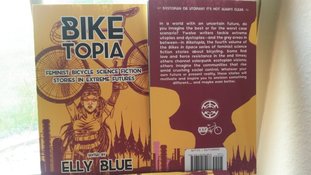
My contributor copies of Biketopia have arrived! Or, more accurately, I have managed to track down my contributor copies of Biketopia. See, my story "Riding in Place" was accepted for this anthology at the tail end of 2015, and I moved in the spring of 2016, and apparently forgot to update my address with the publisher. I realized this after it had been shipped. I considered using an expensive interception service, but figured the package would just be returned to sender and then resent to my new address.
Nope. Fortunately, for the first time in my life, I've only moved across town, and not across the country, so when I discovered the package had been delivered a week ago, I decided to go knock on the door of my old apartment. The new occupant was there, and quite nice. They'd tried to return the package, but it only got re-delivered to them, so it had just been sitting around in the P.O. Box for a week. They said they'd also gotten a shipment of "weird alien books" last December, and I had to tell them, yep, sorry, those were mine—a shipment of Campaign 2100's returned from a bookseller that I had to go pick up from the UPS warehouse after a UPS worker tracked me down through the World Weaver Press Facebook page. Update your addresses, kids. But the books! I have them, and they're beautiful. My solarpunk story "Riding in Place" is the first story in it. In this collection that alternates between utopian and dystopian visions of the future, my story takes on the utopian path. A sentient robot on an asteroid mine just wants to see the utopian world her labor has helped create, and a human miner who has a troubled relationship with her daughter doesn't believe it's a utopia at all. I look forward to reading the rest of the stories in this anthology, especially to see if there are others that might be considered solarpunk—it's a bit rare to find in the wild.
There are a couple of different release dates listed, so I'm not entirely sure when you'll be able to get your copy, but if you're interested, there are a few ways. You can get it in ebook or paperback from Amazon by clicking the links below, or you can order a paperback directly from the publisher (which I highly recommend), Microcosm Publishing. And if you use the code BIKETOPIANS at checkout, you'll get 10% off.
Last year, Upper Rubber Boot Books ran a Kickstarter for an anthology of solarpunk stories, and backers (like me!) got to see the cover art before the rest of the world. If you saw my announcement last Monday, you'll understand that I have a very strong interest in this emerging science fiction subgenre. There's a lot of discussion about what solarpunk is or isn't, but the truth is there just hasn't been enough written to set the tropes and expectations yet. Some of what has been called "climate fiction" could be called solarpunk as well, if it presents an optimistic view of the future (which much of it does not). How do Sunvault editors Phoebe Wagner and Brontë Christopher Wieland define solarpunk? Here's from the Sunvault website: Solarpunk follows in the tradition of steampunk and cyberpunk as the embodiment of a counterculture ideology: innovating a way of life that is better for the present and ultimately better for the future. Concepts like clean energy and sustainability are integral to solarpunk as they are outlets for societal reform. The fight for positive change is where -punk comes into play. Sunvault will contain stories by Jaymee Goh, Lev Mirov, Kristine Ong Muslim, Daniel José Older, Nisi Shawl, Bogi Takács, Lavie Tidhar, A.C. Wise, and a whole bunch of others. Ready to see the cover? Here it is: Sunvault: Stories of Solarpunk and Eco-Speculation will be available August 29, 2017 from Upper Rubber Boot Books. You can follow them at their blog or social media for updates.
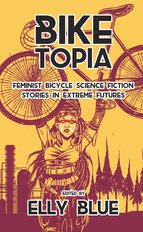
Okay, "soon" may be an overstatement, but in any case, I'm happy to report two new stories that should be out later this year. "A Chorus of Voices," a Lovecraftian secondary-world fantasy about an ambitious monk who realizes not all the vibrations they're chanting are for the good of the world, will appear in the November issue of Weirdbook Magazine.
Also, my solarpunk story "Riding in Place" is part of the Biketopia anthology from Microcosm Publishing. It's the fourth in their "Bikes in Space" series, and that's exactly what my story's about: a woman and a humanoid robot bond over stationary bikes on an asteroid mine. There's a Kickstarter running to fund the anthology (and I get paid for the story based on how well the Kickstarter does), so please go check it out, maybe order a copy or show it to some friends. Below are some images from my Pinterest boards for these two stories. I hope the images below will pique your interest enough to give the stories a read when they're released. I'll be sure to let you know when that happens. "A Chorus of Voices"
See the whole Pinterest Board by clicking here: "A Chorus of Voices"
Forthcoming in Weirdbook Magazine, November 2017 "Riding in Place"
See the whole Pinterest board by clicking here: "Riding in Place"
Forthcoming in Biketopia: Feminist Bicycle Science Fiction Stories, edited by Elly Blue 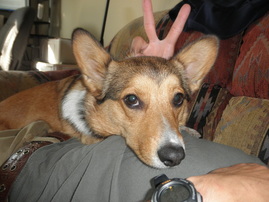 Not a poodle. Not a poodle. Husband, leaving for work: "I'm off to save the world." The Dog: *whines* Me: "This dog appreciates it. He doesn't want to be a post-apocalyptic dog." Husband: "Yeah, he doesn't look good in spikes. He's not tough enough to hang with the other post-apocalyptic dogs." Me: "It's true. All the dogs you ever see in post-apocalyptic stories are, like, Pit Bulls and German Shepherds. You never hear about post-apocalyptic poodles." And so he went off to work, the dog eventually stopped whining, and I wrote "Post Apocalyptic Poodle." Charles Christian, the editor at Grievous Angel, bought the story because, as he says in his introduction to it, "I've a dachshund who came from a rescue charity but who I suspect is actually an alien in an unfortunate disguise." Everyone needs mirrors in fiction, even alien-eyed shorty dogs. I started to say just now that I try not to write apocalyptic stories, but my own publication list belies that claim. There's "The Bolt Tightener," where a seawall is the only thing keeping the monsters from their final victory; there's "Natural Selection," a maybe-it's-a-virus, maybe-it's-zombies survival struggle; there's "As Dust Rolls Toward the Mountain," a contemporary Cassandra retelling about an asteroid strike, there's "Breath Over the Mouth of a Bottle," where an unnatural snowstorm has engulfed the whole planet. So. I guess I do write the occasional apocalyptic story. But I'm a little tired of them, to be honest, which is why it was easy to for me to satirize the genre in "Post Apocalyptic Poodle." It seems to be impossible these days for writers to imagine a future that isn't an apocalypse or a dystopia. I'm very interested in the nascent Solarpunk subgenre, which challenges writers to imagine an optimistic future. Even most supposed solarpunk I've read is still dystopic or post-apocalyptic in nature. It's like the crash is so inevitable at this point that we can't even conceptualize of it not happening. Anyway. "Post Apocalyptic Poodle" is just over 500 words, and it's online to read for free. Give it a read, and then click through to see the other fun stories Grievous Angel has published. Post-apocalyptic Poodle has no master. She runs free in the ruins of her former master’s city. She ravages the Dumpsters, the roadside recycling, the industrial bins. Other survivors skulk around the alleyways and snarl at her. She rolls in mud until it cakes her hypoallergenic locks, positions sticks along her back like spikes, and snarls back. If you enjoy this story, check out my other "dog story," "Working Like a Dog," published in Bartleby Snopes.
|
Archives
January 2024
Categories
All
|

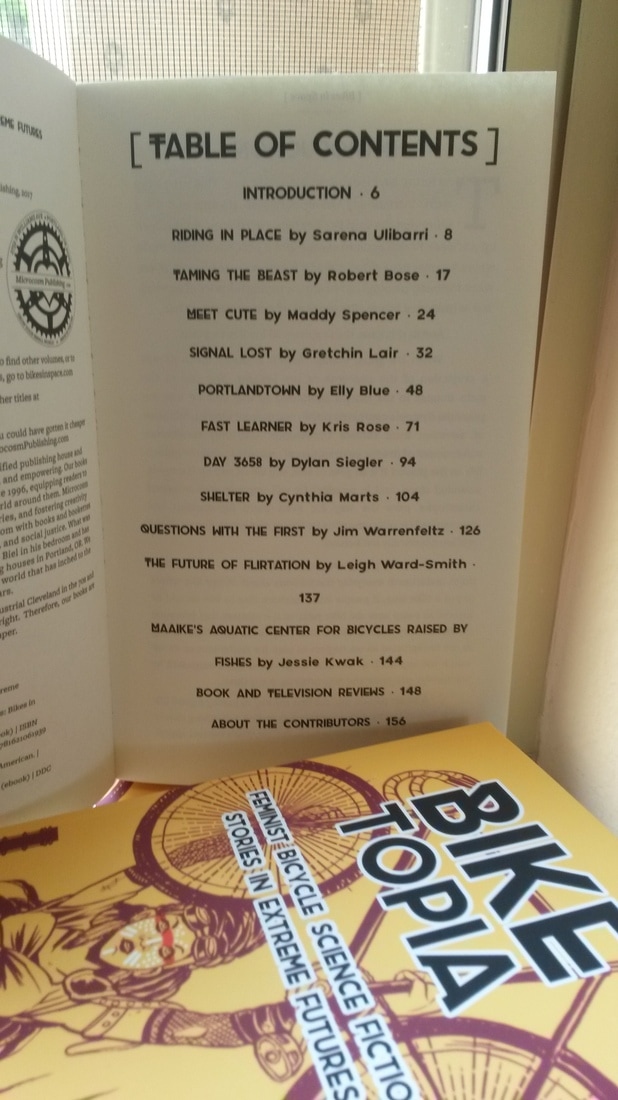
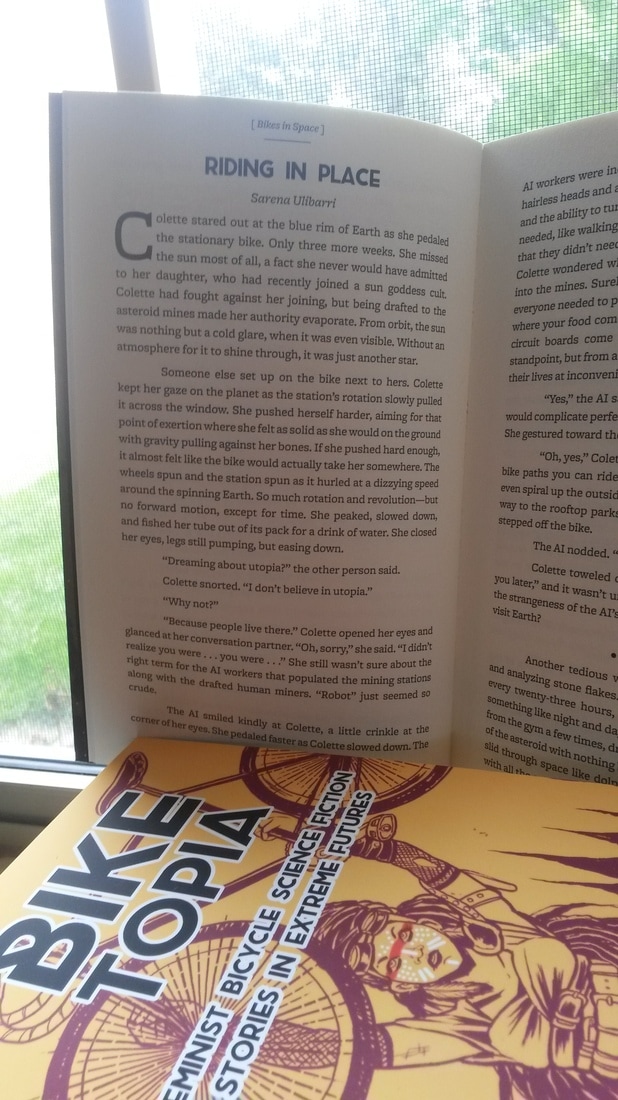
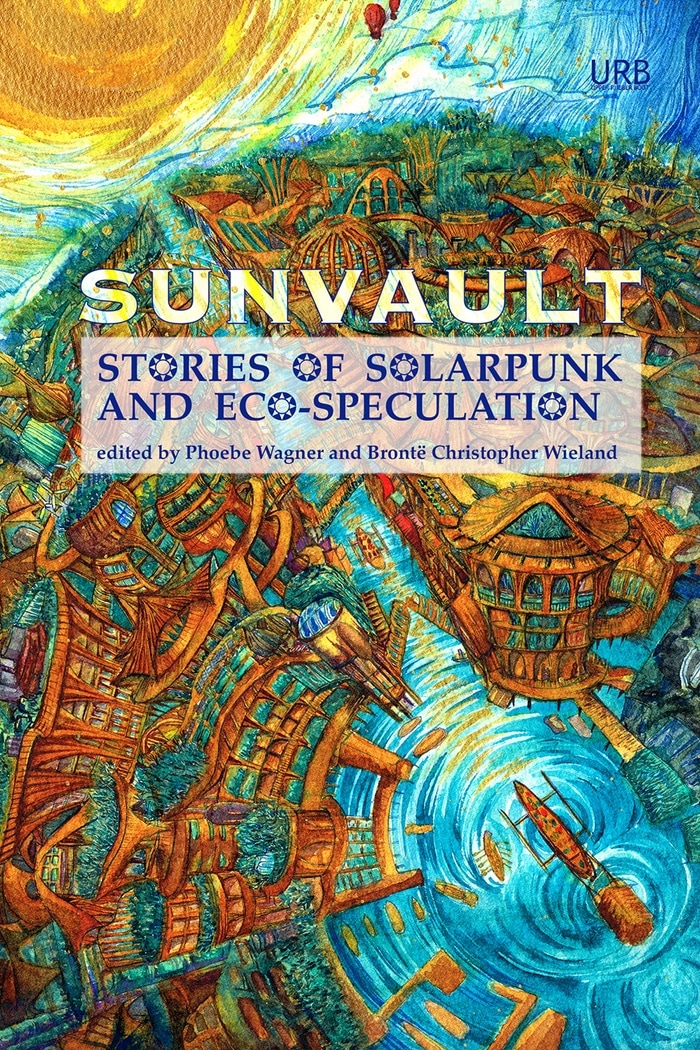
 RSS Feed
RSS Feed